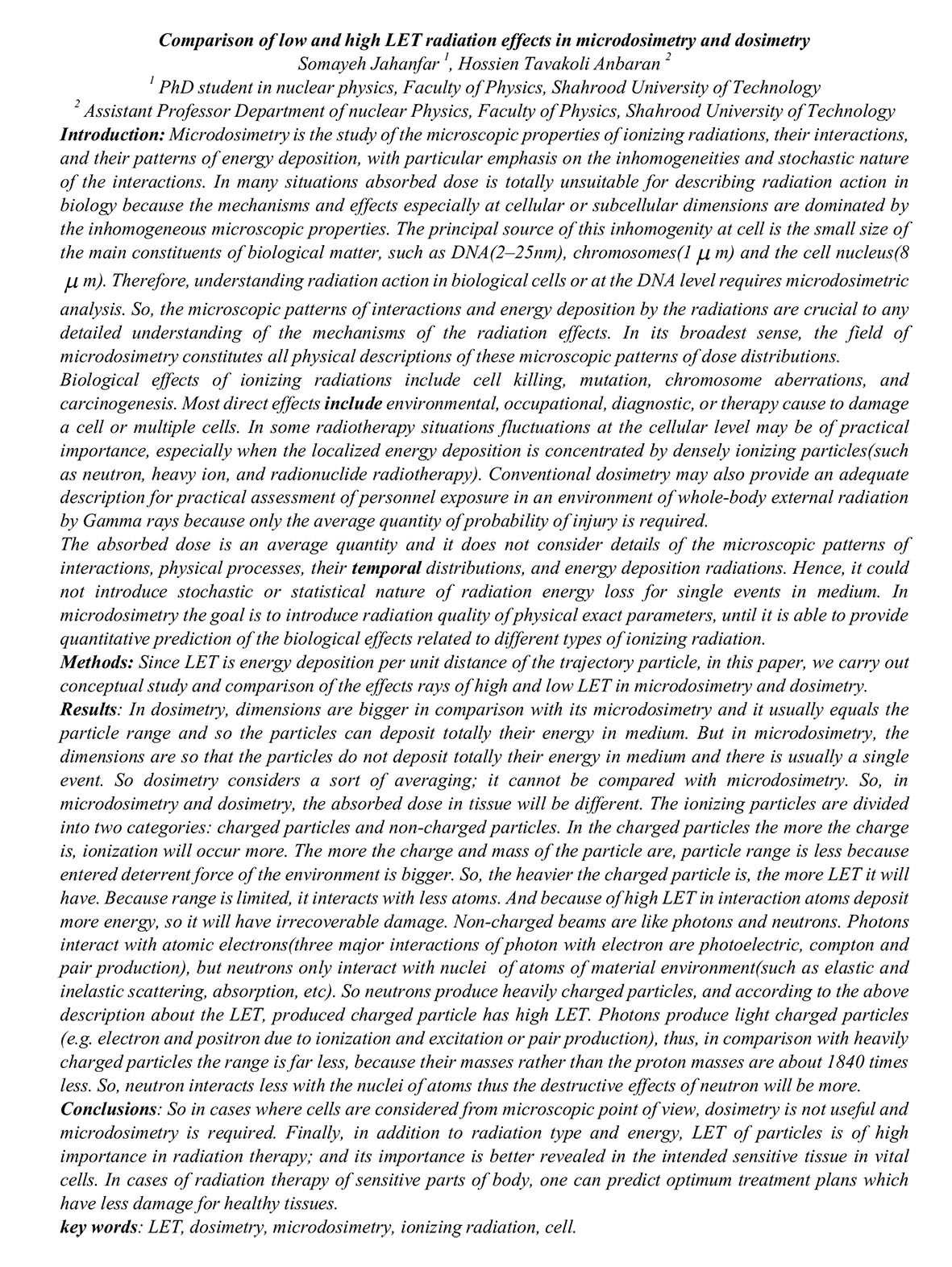Investigation of dose distribution 252Cf Isotron brachytherapy source based on TG-43U1 protocol by Monte Carlo method
- 17/آبان/1402
- مقالات کنفرانسی انگلیسی
- نویسنده : آزمایشگاه میکرودزیمتری نوترون
- 12 بازدید
- 0 نظر

Introduction:
The commercial 252Cf sources are too large in size and clinical applications of neutron
brachytherapy (NBT) are limited to a small number of intracavitary treatments of cervical
cancers. Recently, under the Cooperative Research and Development Agreement (CRADA)
with Isotron Inc., the Oak Ridge National Laboratory (ORNL) encapsulated a new medical
252Cf sources, called Isotron sources that used to intracavitary and interstitial
brachytherapy. On the other hand, prior to the clinical application of brachytherapy
sources, their dose distributions should be investigated. In this study, Monte Carlo
calculations of dose distribution the 252Cf Isotron source is done in the water phantom.
Materials and Methods:
Dose distributions parameters based on TG-43U1 protocol are radial dose function and
anisotropy function. Physical and geometrical parameters of the 252Cf source were
simulated by MCNPX (2.6.0) code based on TG-43U1 protocol in the water medium. To
estimate the dose rate distribution in water, the source was situated in the center of a
spherical 20 cm radius water phantom. The Radial dose function was determined in water,
in a cylindrical annulus 0.2 mm × 0.2mm deep positioned along the transverse axis at
distances ranging from 0.5 to 10 cm from the source center. The neutron absorbed doses in
water were calculated using F6 tallies. Anisotropy functions were calculated at intervals of
1, 2, 3, 4, 5, 10 cm and at different polar angles from θ=0º to 90º with respect to the source
long axis in the water phantom.
Results:
Statistical uncertainty for neutron absorbed dose rates at r ≤ 3.5 cm are lower than 0.3%,
and at 4-10cm are lower than 0.6%. For radial dose function results show that the radial
dose function decreased more slowly. Uncertainty calculated is lower 0.4%. The Anisotropy
function exhibited little anisotropy about the capsule. Thus Anisotropy function can be
considered unity for practical purposes with no significant loss in accuracy due to the thin
walls, low cross-sections, and high-Z materials comprising the encapsulation. The
uncertainty in calculated data is lower 1 %.
Conclusion:
The calculated dosimetry parameters of Isotron source indicate that Anisotropy function
can be considered unity for practical purposes. The radial dose function with increased
distances decreased more slowly. Then neutrons can leave their energy at greater distances
from the source. Hence, neutrons can be used to treat tumors that are large, due to their
greater penetration depth.



نظرات یک دیدگاه جدید ارسال کنید.
برای ثبت نظر ابتدا باید وارد سایت شوید !